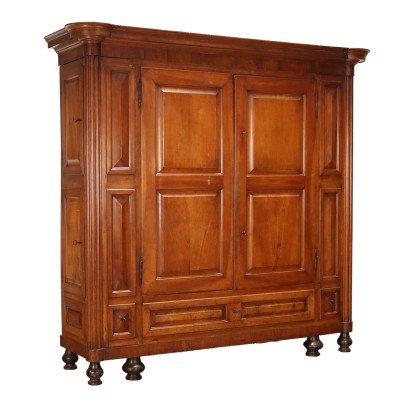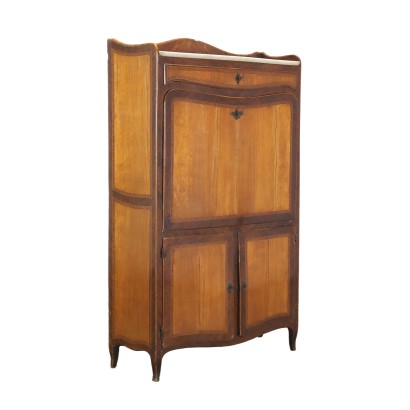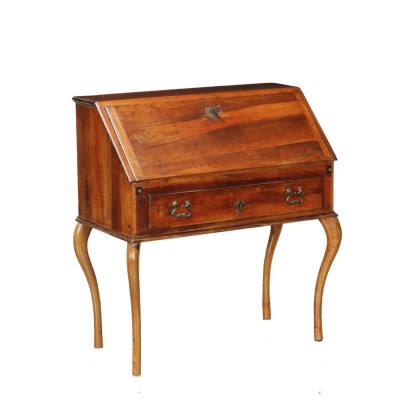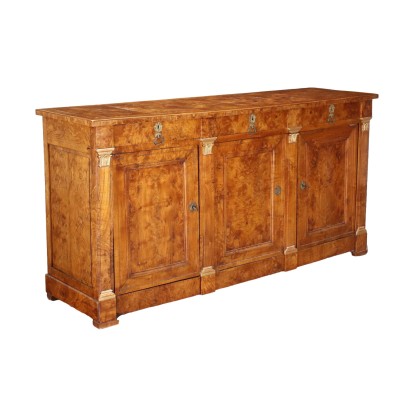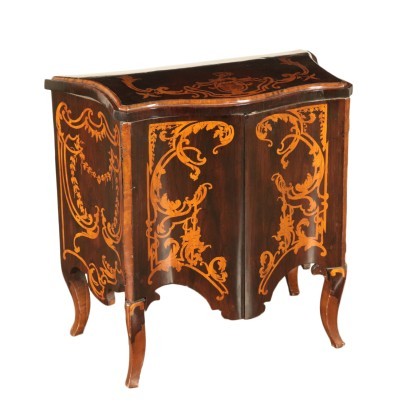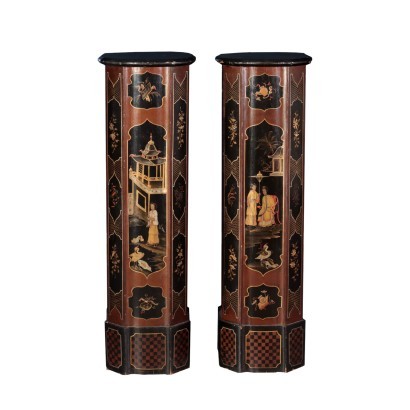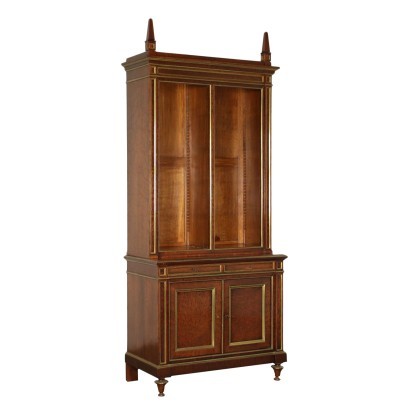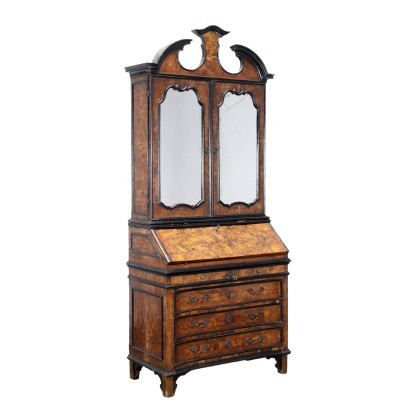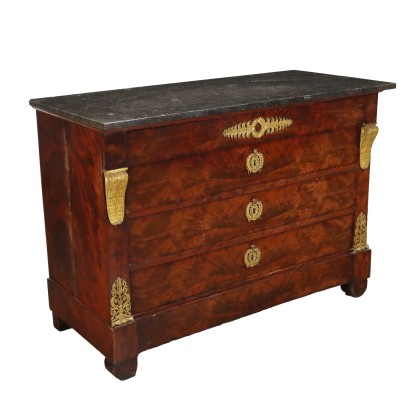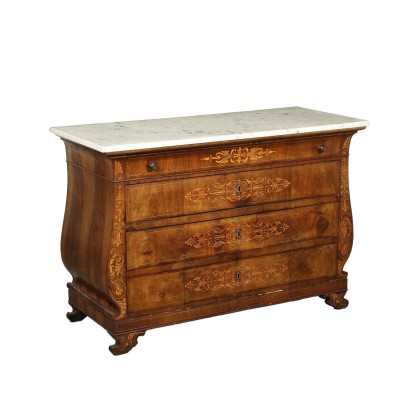Wardrobe Empire Walnut Italy XIX Century - Italy First Quarter XIX Century
Features
Italy First Quarter XIX Century
Style: Empire (1804-1815)
Age: 19th Century / 1801 - 1900
Origin: Italy
Material: Carved Wood
Description
Empire wardrobe in walnut, Italy, first quarter of the 19th century. Molded frieze, front with a pair of doors and lower band with 3 drawers, tapered columns on the uprights, sides house 4 pantry compartments, turned feet. Base and top are connected by wooden screws tightened by the feet. Decorated with carved reserves and arranged within frames. Walnut and poplar interior.
Product Condition:
Product that, due to age and usage, requires restoration and polishing works.
Dimensions (cm):
Height: 231
Width: 243
Depth: 71,5
Additional Information
Style: Empire (1804-1815)
Decorative style of the furniture that is affirmed under the Empire of Napoleon Bonaparte, that is, between 1799, the year of his election as consul, and 1815, the year of his definitive defeat.It has many elements of continuity with the previous Direttorio style, in the more general Neoclassical climate, which derived from the study of classical antiquity the forms and models to be inspired in the creation of furniture.
The peculiar feature of this style is a greater grandeur and courtesy of the furnishings, which had to convey the grandeur of the French nation to the world, hence the name Empire style.
The furniture is characterized by straight, majestic and massive lines, adorned with motifs dear to Napoleon such as bees, eagles, large Ns surrounded by laurel, and, after the Egyptian campaign, many elements taken from Egyptian art.
He prefers the flat bronze decorations, often gilded, to the refined carvings of previous years.
The typical essence of Empire furniture is mahogany.
Find out more with our insights:
Classic Monday: How society influences the taste in furnishings
Classic Monday: Empire, one style of furniture with political purposes
Classic Monday: in the Empire bed roots of culture
Classic Monday: the timeless charm of a toilet Empire



